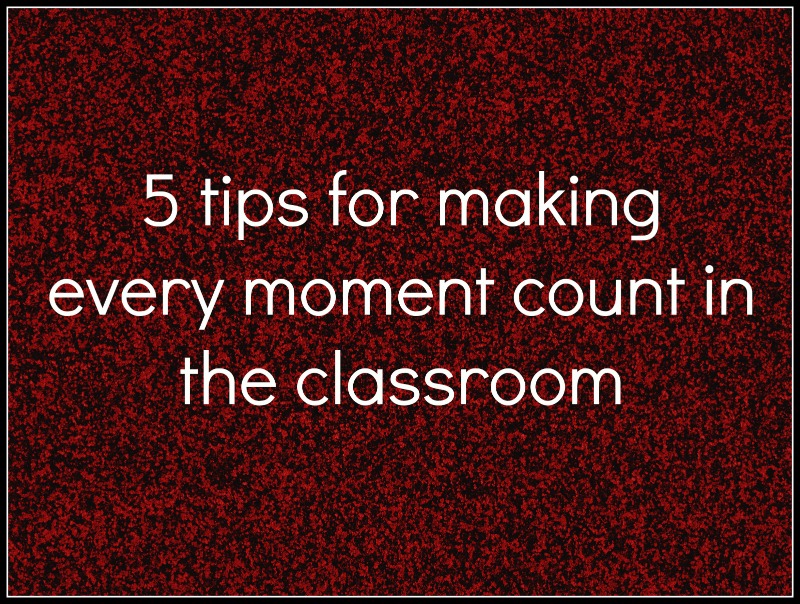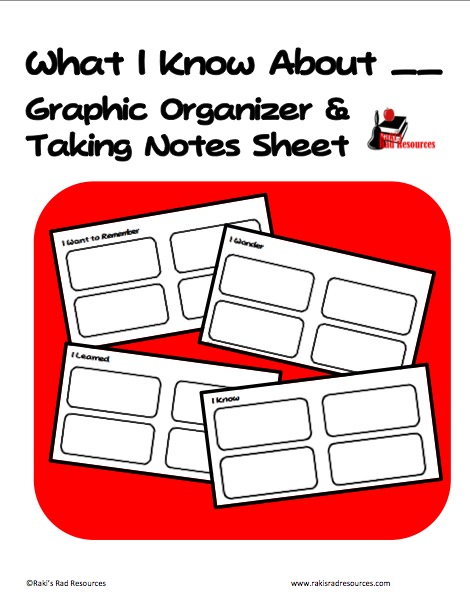
Each month, I invite a different educator to share a few classroom management tips that have worked in his or her classroom. It’s part of a blog post series called Real Teachers, Real Tips. I’m hoping to feature a wide cross-section of teachers from all different parts of the world, at a wide range of grade levels, in a variety of teaching scenarios. Want to share your ideas here? Just fill out the guest blog form!
January’s featured teacher is Heidi Raki, who teaches at the International School of Morocco in Casablanca, Morocco. In addition to teaching, she is a mother of 3 young sons and she is the author of the blog Raki’s Rad Resources, where she shares stories from her classroom, technology suggestions for the classroom and tips for teaching English Language Learners. Thank you, Heidi, for sharing your ideas with us!
Last year I was “blessed” with the most difficult class of my teaching career. I went through every classroom management I knew, many I dug up online, and I still went home frustrated many days. What I finally discovered was something that we all know if we are willing to admit it. Kids cannot get into trouble if they are busy and engaged.
I took a step back to reflect on my daily routine and found that the times my kids were the worst behaved were the times they were the least engaged and the least active, like when I was passing out papers or when we were lining up. So, I added in anything I could think of to keep them busy. While we were passing out papers, we sang songs. While we were lining up, we chanted math facts. While we were listening to a story, the kids were drawing pictures of what they saw. There was never a down minute in my classroom. In addition to helping the management of my class, my struggling students seemed to grow exponentially by these simple learning moments.
This year, I have been blessed with truly the easiest class of my teaching career. However, due to a change in school and in grade level, there is suddenly so much more that I need to teach them and I struggled at first to fit it all in. I reflected on how well those struggling students did last year because of those extra moments, of singing songs, reciting rhymes, and chanting math facts. So I decided to add those things in to my day again, not because of management, but just to buy some more time and it has made a world of difference. Now, my students are soaring through material and growing exponentially.

When Angela asked me to write this blog post, I went back through all the ways I have made every moment count in the last two years and compiled a list to share with you. Here are some ways you can make every moment count in your classroom:
1.) Use nursery rhymes or content chants during transition times.
Rhymes and chants are great ways to work on rhyming and sound patterns with younger children and vocabulary and common cultural knowledge with older children. My class has an assigned rhyme each week that they memorize and inspect using reading comprehension strategies. Whenever we line up, we recite this rhyme to keep us all together, and to prevent talking or battling over a place in line before it begins.
2.) Use songs as signals of transitions, and to help keep the noise down when you prepare the next activity.
As I pass out papers or prepare a center, my kids sing songs we know to keep them active, but not chattering. This helps the transition, and gives me a few minutes to set up the next activity. Also, it is somehow easier on the ears if they are all singing a song, rather than if there are 10 different conversations going on.
3.) Keep a novel on hands at all times.
I use a timer to help my students know how long they have to complete a designated task, and to know how long they have to clean up. If they complete their task or clean up early, we pull out our novel and read aloud until the timer goes off. This is especially good for leaving cliff hangers and getting kids to make a prediction and can be used at any grade level.
4.) Mental math is a great thing to practice during transition times.
Sometimes I throw out random math problems to the whole class and other times I go down the line and ask specific problems to specific students. Math facts of any operation are the most common type of mental math, but I also practice doubling and halving numbers, ten more or ten less, elapsed time, rounding, place value, converting measurements etc. For younger students, we can practice skip counting, number comparisons or even length comparisons, ie.” Who can tell me something that is bigger than a pencil?”
5.) Provide students with “reflection sheets” during read alouds, movies, presentations or other activities where students can get “distracted”, give them a paper and pencil (and a clipboard if necessary) to allow them to reflect on what is going on, and to help them stay focused on the topic at hand.
These papers could be a graphic organizer, a sheet of guiding questions, a sentence frame, or just a plain sheet of paper for drawing. You can download this graphic organizer I made for reflecting on learning for free.
I don’t use every strategy every day or even every week. I fill them in where I see the need or the opportunity. If my kids get loud or rambunctious, I use that as a reminder that they need to be more engaged and it’s time to pull into my toolbox of tricks.
How do you make sure that every moment counts in YOUR classroom?

Angela Watson
Founder and Writer
Sign up to get new Truth for Teachers articles in your inbox
OR

Join our
community
of educators
If you are a teacher who is interested in contributing to the Truth for Teachers website, please click here for more information.
















